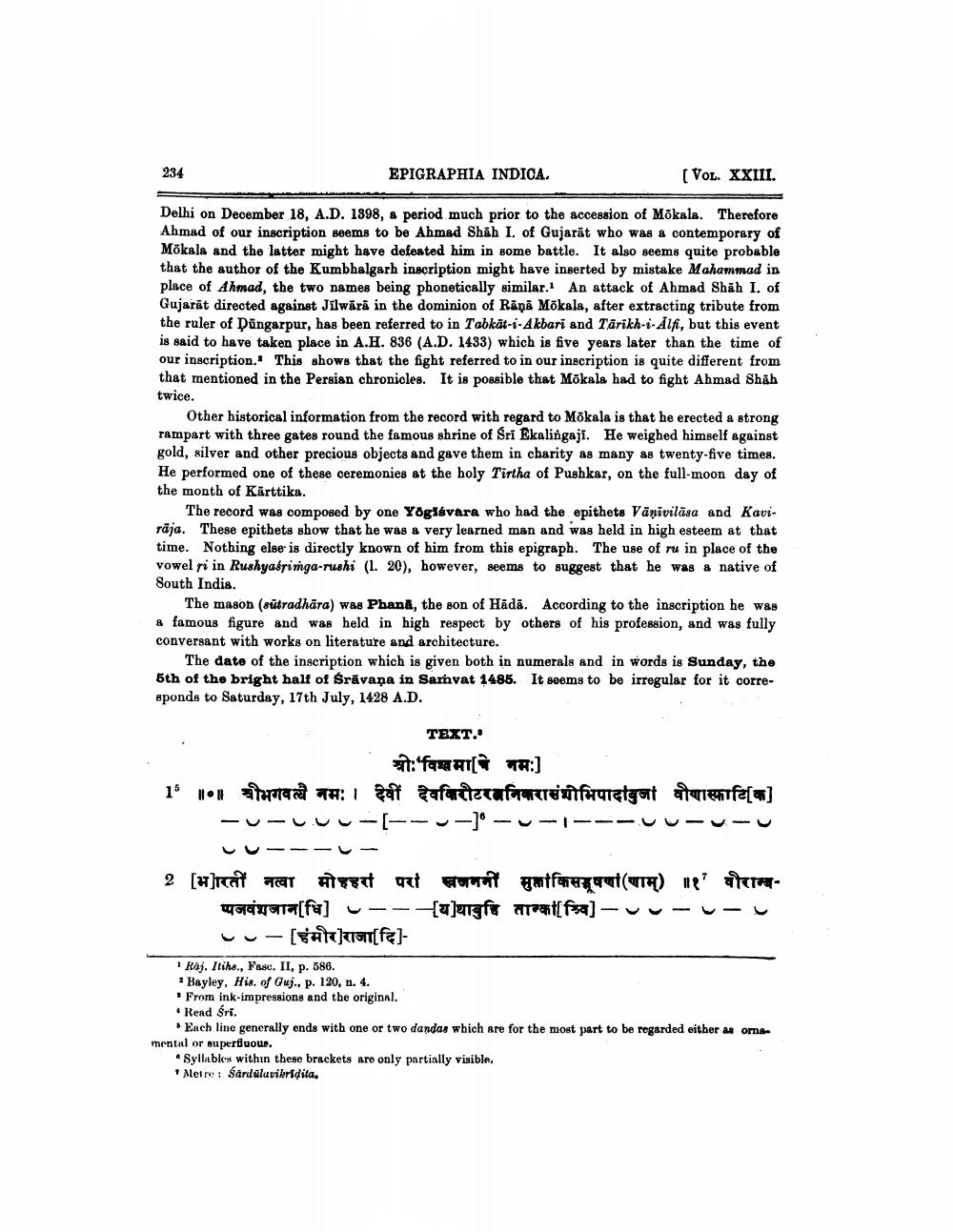________________
234
EPIGRAPHIA INDICA.
(VOL. XXIII.
Delhi on December 18, A.D. 1898, a period much prior to the accession of Mökala. Therefore Ahmad of our inscription seems to be Ahmad Shāh I. of Gujarät who was a contemporary of Mökala and the latter might have defeated him in some battle. It also seems quite probable that the author of the Kumbhalgarh inscription might have inserted by mistake Mahammad in place of Ahmad, the two names being phonetically similar. An attack of Ahmad Shāh I. of Gujarat directed against Jilwärä in the dominion of Rāņā Mökala, after extracting tribute from the ruler of Dungarpur, has been referred to in Tabkāt--Akbari and Tārikh-i-Alfi, but this event is said to have taken place in A.H. 836 (A.D. 1433) which is five years later than the time of our inscription. This shows that the fight referred to in our inscription is quite different from that mentioned in the Persian chronicles. It is possible that Mökala had to fight Ahmad Shah twice.
Other historical information from the record with regard to Mökala is that he erected a strong rampart with three gates round the famous shrine of Sri Ekalingaji. He weighed himself against gold, silver and other precious objects and gave them in charity as many as twenty-five times. He performed one of these ceremonies at the holy Tirtha of Pushkar, on the full-moon day of the month of Kärttika.
The record was composed by one Yögisvara who had the epithets Vānivilāsa and Kavirāja. These epithets show that he was a very learned man and was held in high esteem at that time. Nothing else is directly known of him from this epigraph. The use of ru in place of the vowel si in Rushyassimga-rushi (1. 20), however, seems to suggest that he was a native of South India.
The mason (sūtradhāra) was Phana, the son of Hādā. According to the inscription he was & famous figure and was held in high respect by others of his profession, and was fully conversant with works on literature and architecture.
The date of the inscription which is given both in numerals and in words is Sunday, the 5th of the bright half of Srāvana in Sarvat 1485. It seems to be irregular for it corresponds to Saturday, 17th July, 1428 A.D.
TEXT.
*:fa ATTA:) 1 ॥॥ श्रीभगवत्यै नमः । देवी देवकिरीटरखनिकरासंशोभिपादांबुजा वीणास्फाटि[क]
-u-vu -[--- ---I---vu-u-u
VU--- - 2 [at]menit at a n oat Format gmiferuat(TH) ne? altera
gruoa[fa] -- [u]ungfe *[fa]-vu-uvu- [AT][f]
1 Raj. I tihe., Fasc. II, p. 586. * Bayley. His. of Guj., p. 120, n. 4. . From ink-impressions and the original. . Read Sri.
Each line generally ends with one or two dandas which are for the most part to be regarded either as oma mental or superfluoue.
* Syllables within these brackets are only partially visible. Metre : Sardúlavikridita.




